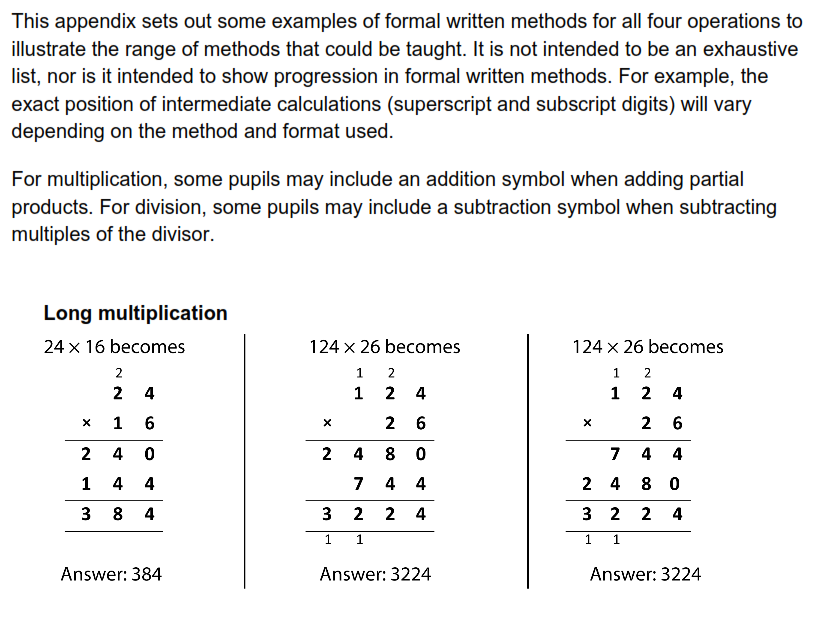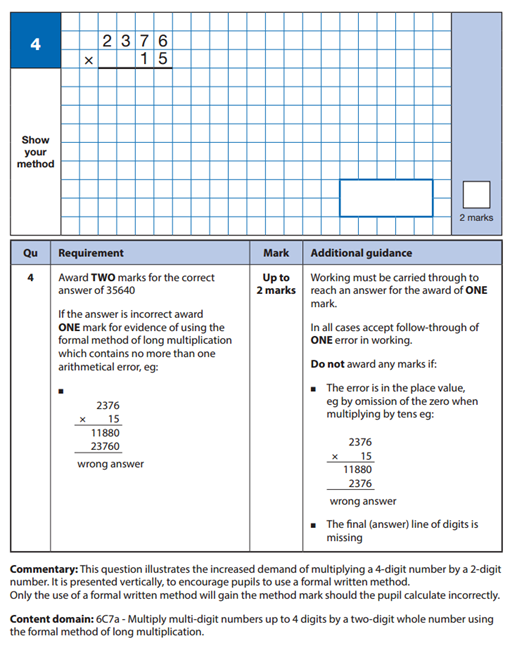As a department, we seem to have spent the last six months debating exactly which method is OK for multiplying large numbers. Personally, I learnt column/long multiplication at school, and got pretty good at it, although to be honest, past about midway through Year 11 I can’t recall a situation where I’ve really had to accurately multiply two large numbers without a calculator – but that’s another debate. Teacher training introduced me to the grid method, and I immediately went “ooh fantastic!” and taught that for three years without any critical thought as to whether or not that’s even the best method.
Then I did this activity from the NCETM and several of my Year 7s decided they really liked Gelosia multiplication. Some of them had previously been really unsuccessful with grid method – although they understood what they were doing, they invariably lost the odd zero along the way, or made a pig’s ear of lining up the addition calculation at the end. I told them to go with Gelosia if they understood it. Weirdly enough, I started seeing Gelosia popping up on my whiteboard that year from a colleague who had always taught multiplication that way (as Napier’s Rods). Then I got a pupil who asked if he could use “the Chinese method” – lo and behold, it was the same thing. Again, I told him to go ahead if he was getting the right answer. It’s also known as “lattice” multiplication.
Then all the hoo-ha kicked off about the new Maths curriculum and teaching methods. On one course I attended, we had a fifteen-minute debate about the pros and cons of each method, with vast divisions of opinion. We spent an awfully long time debating the appendix of the new Primary Curriculum – that’s this bit:

– and whether or not “some examples of formal written methods” implied that other methods would be acceptable or not. Couple this with Elizabeth Truss’s response about Key Stage 2 testing: and I was thoroughly confused about the status of that appendix.
The Key Stage 2 SAMs seem to make things a little clearer – I found this:
“Key stage 2 tests will be designed to reward pupils whose working shows they have used the efficient methods. If children get the right answer, they get the marks. If they get the wrong answer but their working shows that they were using the most efficient methods, they will still be rewarded.”

This seems to imply that the only “formal written method” they are accepting for any method marks is long multiplication. Of course, if this brand spanking new curriculum works as planned and all our Year 7s suddenly start being able to use long multiplication the minute they arrive at secondary school, it’s all a moot point, but I think we can assume that, as now, at least some of them will muddle their way through primary without having a clue how to work out 2376 x 15.
So my next question was – is it OK for pupils at GCSE to use any method, or do they have to do long multiplication too to get the method marks? So I went back to the SAMs for a peruse. Edexcel’s Foundation Paper 1 has the calculation 24 x 225 (Q3a), with the following in the mark scheme:
M1 for a complete correct method for multiplication with no more than one multiplication error.
AQA’s Foundation Paper 1 has all three methods (long, lattice and grid) for the calculation 27 x 86 (Q15b) listed in the mark scheme, with method marks specifically given for each stage. I couldn’t find a comparable calculation on the OCR papers.
Leaving out the accreditation mess and presuming the exams stay fairly similar, it seems that, although KS2 tests are asking for long multiplication, our GCSE pupils are fine to continue to use whichever method they prefer.
See Part 2 for a discussion of pros and cons of grid, lattice and long multiplication methods.